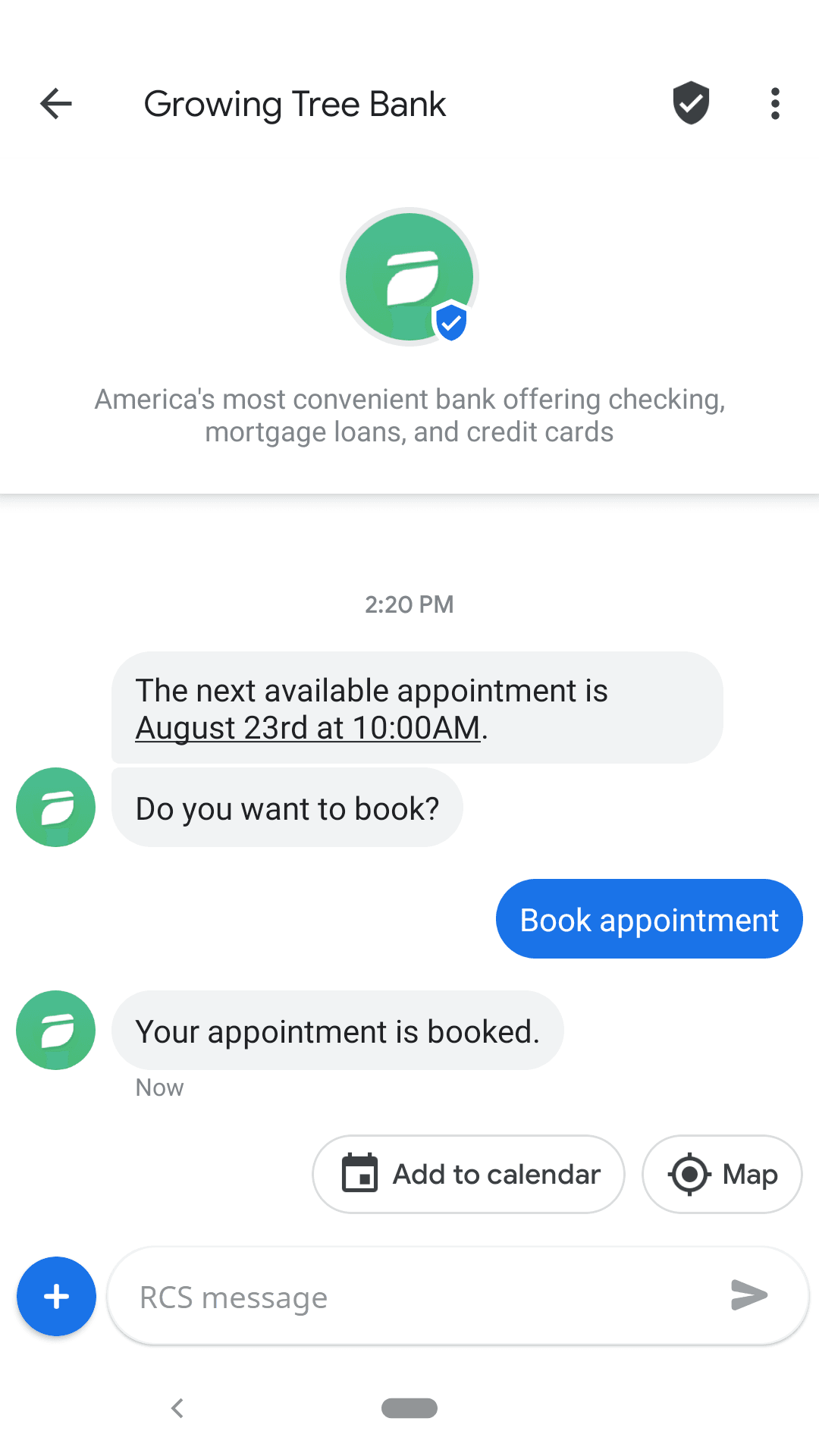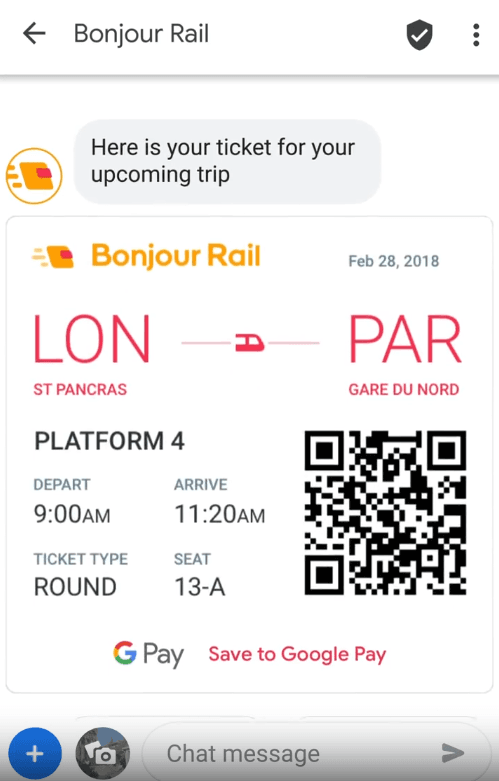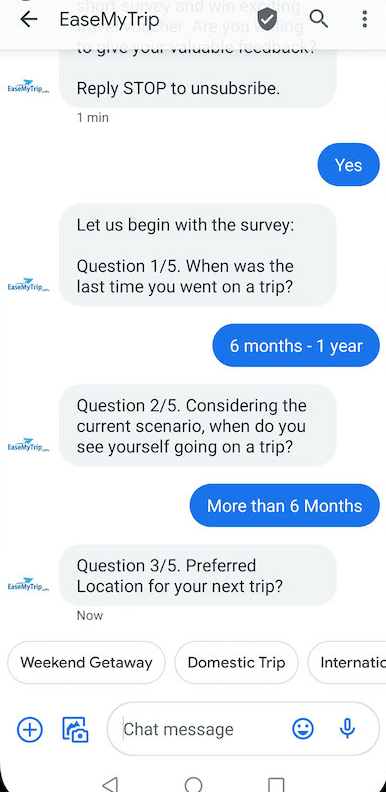7 Ways How You Can Use RCS for Customer Service

With the growing necessity of smartphones, mobile communications, and commerce is growing increasingly. It has reached a point where we are using our phones more than any other device daily. In fact, on average, we use smartphones for more than 3 hours every day.
But what does that mean from a business perspective? Knowing that your customers are spending so much time on their smartphones, you can use this opportunity to market your products or services and provide them with a tailored mobile shopping experience.
However, marketing your offerings is not the only thing you can do. You can also use smartphones to deliver quality customer support to ensure your customers enjoy their purchases and come back again for repeat business.
To achieve this goal of boosting customer satisfaction scores to drive more sales, you will need a communication channel to conversate with your customers, hear their concerns, and provide quick resolutions to their problems.
This is where RCS comes in!
RCS is a messaging protocol that comes with outstanding messaging features to let you send messages to your customers directly to handle their problems in an interactive manner and on time.
Does the concept of using RCS to offer customer service sound new to you? Well, worry not. In this blog post, I’ll go over the 7 ways to use RCS for enhancing your customer support initiatives and resolve their issues effortlessly. So, without wasting any time, let’s jump straight into it!
What is RCS messaging?
In simple terms, RCS is the better version of SMS/ MMS, and it combines the capabilities of both of these channels in a unified, universal solution. RCS supports rich media cards, images, videos, GIFs, stickers, files, and audio calls, enabling you to provide all the necessary content to your customers to address their concerns.
It is equivalent to Apple’s iMessage but available for Android devices. However, Apple is going to adopt RCS in its upcoming launch of iOS 18, as announced in WWDC 2024.
7 ways to leverage RCS to streamline your customer support
RCS offers a wide range of communication and multimedia functionality to help your customer success teams deliver a solid customer support experience. Having said that, here are some of the ways in which you can utilize RCS to optimize customer care.
Enhanced messaging
If you have been using SMS for customer service purposes, then this one is for you. RCS comes with a suite of advanced messaging features that can transform the way you interact with your customers.
Unlike traditional SMS, as I said before, RCS supports rich media such as images, videos, and audio messages, allowing you to convey information more effectively. Additionally, read receipts and typing indicators provide transparency, letting customers know that their messages are being seen by you and will be responded to promptly.
Furthermore, if you want customers to take a specific action, with SMS, you would have to send a link and, after clicking on it, the customer will be taken to the relevant landing page to complete the said action.
However, this is not the case with RCS messaging. RCS lets you send interactive messages that include a button that your recipients can click and perform any subsequent actions directly on the app. Plus, the built-in integration with the Chrome browser allows for quicker execution without having to leave the Message app.
An example of an enhanced message is sending product guides or helpful resources as PDF files to help your customers solve their problems themselves. Additionally, you can include demo videos to better explain to your customers how to make the most of their purchases.
Automated conversations and chatbots
RCS supports the use of chatbots, allowing you to provide 24/7 customer service without needing human intervention. Chatbots can handle a variety of tasks, from answering frequently asked questions to scheduling meetings should they need to talk with a customer support rep.
Besides that, RCS supports a more interactive and conversational user interface. Chatbots can use buttons, carousels, and suggested replies to guide the conversation and make it more intuitive.
Not just that. When a query becomes too complex for a chatbot, RCS allows you to seamlessly handoff to a human agent, with the full conversation history intact. This ensures continuity and reduces customer frustration, as you don’t have to ask the same questions, saving them from the same responses again.

RCS service providers like Zixflow enable you to set up automated workflows to streamline your messaging and engage customers without having to manually type or send messages.
Your workflow can be customized to respond to customers’ activity. For example, if a customer uses suggested reply buttons to ask for something, the bot can go through your help center or previous interactions to provide relevant responses.
Interactive customer support
With RCS, you can send interactive troubleshooting and support messages, making it easier to address customer queries promptly and efficiently. Also, customers can send images, videos, and other files to illustrate their problems, and your support agents can respond with step-by-step instructions or video tutorials.
Imagine you are a home appliance company using RCS to help your buyers with a malfunctioning device. The customer can send a video of the issue, and you can provide a detailed video response, guiding them through the repair process.
It doesn’t end here. You can use RCS to send customers links to live support sessions, diagrams, or instructional videos that help solve their problems more effectively. This interactive approach is much more engaging than traditional email or phone support and has a better capacity to solve an issue effectively.
Want to deliver an interactive customer experience to build long-term relationships?
Use Zixflow’s marketing and automation capabilities to craft highly interactive messages.
See it YourselfMedia-rich assistance to resolve any problem
The biggest aspect where RCS is better than SMS is its media capabilities. While SMS only lets you connect via basic text message, RCS, on the other hand, includes rich media cards that help you to exchange images, videos, and other types of content.

If you deal with products that require assembly or have complex features, RCS can be used to send step-by-step instructional videos to aid customers in understanding what they need to do, but also reduce the burden on your customer-facing teams by preemptively taking care of common issues.
Personalized customer experiences
Tailoring your messages is crucial for building strong customer relationships, and RCS provides the perfect platform for delivering them. With RCS, you can send personalized messages based on customers’ data, such as purchase history, location, and behavior.
Personalizing your customer experience allows you to connect with your customers on a personal level. On top of that, using RCS, you can create messages that dynamically adapt to the recipient’s preferences like sending messages recommending activities based on the customer’s past actions.
This way, you can offer help and, at the same time, use this customer engagement to get more sales for your business.
Secured and private communication
Ensuring a secure conversation is paramount in customer service, and RCS is designed with security in mind. RCS messages are end-to-end encrypted, providing a secure channel for sharing sensitive information.
You can use RCS messages to send OTPs to verify customers’ authenticity. Plus, RCS helps you comply with data protection regulations like GDPR and CCPA by providing secure communication channels and enabling customers to opt-in to receive messages. This not only protects customer data but also helps you avoid costly fines and legal issues.
Enjoy secured conversation with end-to-end encryption.
Zixflow is GDPR compliant solution with its data stored in top-notch servers, running surveillance across the clock.
Safeguard Your ConversationsCollecting real-time feedback
If you are using RCS for delivering customer support, then collecting customer feedback from time to time is essential for continuous improvement. It allows you to monitor how your support team is doing and what can be improved to enhance customer satisfaction for better sales efficiency.
Once again, you can take advantage of RCS to gather real-time feedback through interactive surveys. Design a survey with a question and multiple options, and send it directly to your customers, prompting quick replies.
As I mentioned above, RCS supports interactive elements like buttons and sliders to simplify the task of responding to your feedback messages. You can simply ask your customers to rate their customer support experience on a scale from 1 to 10 with a quick reply button to submit their opinions.
Moreover, if you want detailed feedback, you can ask them to provide a typed response using the field to help you streamline your customer care framework. The real-time nature of RCS ensures higher response rates and more accurate feedback, allowing you to make timely improvements.

One more thing you can do after receiving feedback from your customers is to follow up with them and address any concerns that they might have showcased in their feedback and thank them for providing input.
Doing so, not only portrays that you value their opinions but also gives you the opportunity to rectify any issues right away and build trusted connections.
Be on top of customer queries with RCS
Although RCS was developed over a decade ago, it is only in recent years that it has been adopted by major brands and telecom carriers. And in the coming years, it is poised to completely replace SMS to provide a universal standard for messaging.
As a business, it is now the time to think about whether you want to use this unified channel to handle all of your business communications or multiple apps, each for one specific purpose.
By adopting RCS in your customer support infrastructure, you can improve customer satisfaction, drive sales engagement, and establish a loyal customer base. It is a rich communication solution that has the potential to completely change the landscape of mobile communications.
So, if you want to take your customer service to the next level, RCS is one of the channels you have to consider, especially if you have a large audience using mobile phones to interact with your business.
